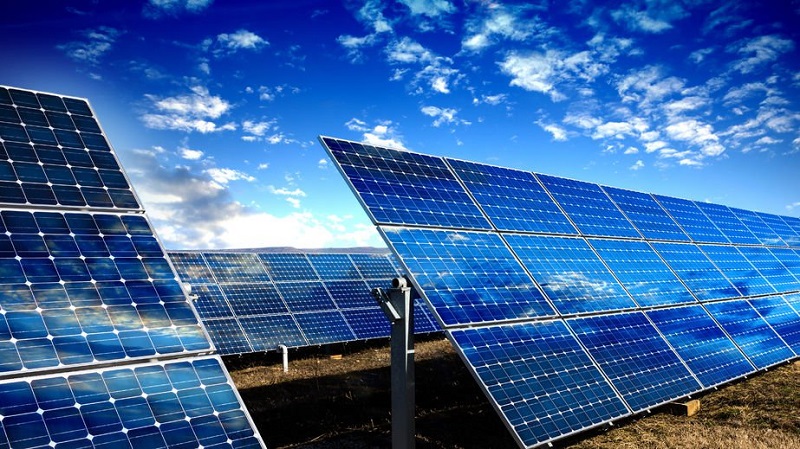By Thuita Gatero, Managing Editor, Africa Digest News. He specializes in conversations around data centers, AI, cloud infrastructure, and energy.
Nigeria is being nudged toward a sunrise industry worth billions if only it can harness the sun sitting right above it. Energy and climate experts are calling on Abuja to deepen investments and introduce stronger policy incentives for large-scale solar power. These incentives often include tax breaks for developers, duty exemptions for imported panels, and guaranteed carbon-credit frameworks. In theory, they are a win-win: lower costs for investors, faster renewable rollout for government.
So why doesn’t every country just do this automatically? Because incentives come with headaches. They cost governments revenue, shake up entrenched fossil-fuel interests, and force institutions to reform. For politicians, subsidising a long-term climate future is rarely more attractive than subsidising short-term voter patience.
But experts insist the payoff is clear: unlock as much as $2.5 billion in carbon credit value, a slice of a global market now estimated above $100 billion a year.
“Solar expansion remains Nigeria’s most viable path to emission reduction, net-zero by 2060, and participation in the booming global carbon trade,” one analyst told Nairametrics.
Solar is beloved by climate advocates not because it’s fashionable, but because every kilowatt of clean energy displaces fossil fuel emissions. And while politicians often speak about climate goals in lofty, moral language, insiders say the blunt truth is simpler: Reducing emissions is increasingly a passport to investment, trade access, and international funding.
Put less politely? If Nigeria doesn’t play the low-carbon game, the world will move on and capital will move with it.
Specialists argue Nigeria needs to “mainstream” solar meaning: move it from niche pilot projects and elite homes into the everyday economy homes, factories, offices, farms, telecom towers.
That requires a “clear policy runway”: tax incentives, easy licensing, land-use clarity, and credible carbon-credit rules. Investors like predictability; policy fog kills projects faster than bad weather.
Of course, there’s pushback. Local diesel cartels, grid monopolies, and bureaucratic turf-wars don’t surrender cash flow easily. Carbon credit certification also demands transparency something Nigeria’s energy bureaucracy has not always been famous for.
Read Also: Why is Kenya doing load-shedding between 5pm and 10pm?
Nigeria sits in one of the world’s richest solar irradiation belts, the sun-soaked Sahel stretching across countries like Niger, Mali, Chad, Sudan, and even northern Kenya. Yet Nigeria’s installed solar capacity is less than 2% of national power demand.
For comparison, Kenya gets nearly 10x more solar power installed per capita, despite having fewer people and a smaller economy. South Africa has added over 6,000 MW of small-scale solar in just two years, largely financed by fed-up households tired of blackouts.
Nigeria’s Energy Transition Plan promises net-zero emissions by 2060. But on the ground, progress is slowest where it matters most, rural electrification. The Rural Electrification Agency estimates Nigeria needs 5 million off-grid solar systems for underserved communities. Typical household-scale off-grid installations in Nigeria range between $300 – $700 depending on battery capacity, meaning a nationwide rollout could cost roughly $1.5 – $3.5 billion. A hefty bill unless someone else helps pay it. That “someone else” could be the carbon finance market.
Industry players describe renewable viability as the technical ability to produce consistent, clean energy.
Commercial scalability, however, means developers can build big, profitably, without relying on donor funding.
Right now, solar often makes climate sense but fails commercial math especially in emerging markets. Carbon credits tip the scale, turning solar from good for the planet to good for business. And yes, insiders quietly admit it: Commercial irresistibility not climate virtue is the real unlock. Until solar beats diesel generators financially, adoption will remain slow.
Nigeria’s power regulator, NERC, seems to be catching the wind. It recently proposed rules allowing households and businesses to sell excess solar back to the grid, a model used successfully from Germany to California to South Africa. It’s called net-metering, and it turns ordinary citizens into mini energy suppliers.
Nigeria imported 4 million solar panels in 2023 worth about $200 million. By early 2025, panel imports hit ₦125 billion, a surge driven largely by rural and peri-urban households not big corporates. That suggests ordinary Nigerians are voting with their wallets while government deliberates.
Still, the total installed solar capacity is just 385.7 MW modest in a country of 220 million people. Who is importing all this equipment? A blend of local SMEs, Chinese suppliers, and diaspora-backed distributors mostly for residential and small-commercial systems. Industry estimates suggest 70–80% is for household and micro-business use, not industrial plants.
“If Nigeria doesn’t accelerate solar adoption and integrate emissions accounting, we risk missing out,” warns energy economist Dr. Okoro.
Nigeria isn’t short of sunshine. What it needs now is execution, policy clarity, financial courage, and a willingness to bet on a future powered by light, not fuel.



